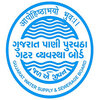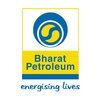Graduate Apprenticeship Trainee
100+ Graduate Apprenticeship Trainee Interview Questions and Answers

Asked in Sun Pharmaceutical Industries

Q. What is required to increase the flow rate in a centrifugal pump?
To increase flow rate in a centrifugal pump, increase impeller speed, reduce discharge head, or increase impeller diameter.
Increase impeller speed by adjusting motor speed or using a larger motor
Reduce discharge head by opening valves or reducing pipe friction
Increase impeller diameter by replacing impeller or using a pump with a larger impeller
Ensure pump is properly primed and not clogged
Consider the limitations of the pump and system design

Asked in Sun Pharmaceutical Industries

Q. What is your favorite chemical engineering subject?
My favorite chemical engineering subject is process design.
I enjoy the challenge of designing efficient and cost-effective processes.
I find it fascinating to optimize the use of resources and minimize waste.
Examples of process design projects I have worked on include designing a distillation column for separating azeotropic mixtures and optimizing a chemical reaction for maximum yield.
Graduate Apprenticeship Trainee Interview Questions and Answers for Freshers

Asked in Swiss Re

Q. Which will give higher returns: an annuity at the beginning of the year or at the end of the year?
Annuity at year start generally gives higher returns due to longer investment period and compounding interest.
Annuity at year start gives higher returns due to longer investment period for compounding interest
Investing at year start allows for more time for the investment to grow
Annuity at year end may result in lower returns as the investment period is shorter


Q. > What is Viscosity, density, Newton's law of viscosity, surface tension? >Explain about cycles in I.C.Engine? > Draw the diesel & auto cycle? >Comparison between diesel & auto cycle
Questions related to fluid mechanics and cycles in I.C. Engine
Viscosity is the measure of a fluid's resistance to flow
Density is the measure of mass per unit volume of a substance
Newton's law of viscosity states that the shear stress between adjacent fluid layers is directly proportional to the velocity gradient
Surface tension is the force that causes the surface of a liquid to contract
Cycles in I.C. Engine include intake, compression, power, and exhaust
Diesel cycle has const...read more

Asked in Swiss Re

Q. What is reserving in insurance, and what methods are used?
Reserving in insurance is the process of estimating future claims and setting aside funds to cover them.
Reserving involves predicting the amount of money that will be needed to pay for future claims.
Methods used in reserving include the chain-ladder method, Bornhuetter-Ferguson method, and loss ratio method.
The chain-ladder method extrapolates past claims development patterns into the future.
The Bornhuetter-Ferguson method combines past experience with expected future experie...read more

Asked in Reliance Industries

Q. How do you calculate the number of trays in a distillation column?
To calculate no of trays in distillation column, use McCabe-Thiele method or Fenske equation.
Determine the desired purity of the distillate
Calculate the number of theoretical trays using McCabe-Thiele method or Fenske equation
Account for efficiency and other factors to determine actual number of trays needed
Graduate Apprenticeship Trainee Jobs




Asked in Asian Paints

Q. What is a pump, and what are its classifications based on the purpose of application?
A pump is a mechanical device used to move fluids from one place to another. It can be classified based on the purpose of application.
Pumps are used to move fluids such as water, oil, and chemicals.
Classification based on purpose includes centrifugal pumps for water supply, positive displacement pumps for oil and gas, and metering pumps for precise dosing.
Other classifications include axial flow pumps, mixed flow pumps, and regenerative turbine pumps.
Pumps can also be classif...read more
Asked in Kochi Refinery

Q. If you had the opportunity to crack GATE with a high score and choose a PSU, would you choose Kochi Refinery?
Yes, I would consider Kochi Refinery as an option for employment.
I am open to exploring all options and would consider Kochi Refinery as a potential employer.
I would research more about the company and its work culture before making a final decision.
My ultimate goal is to gain valuable experience and contribute to the growth of the organization.
I am willing to work hard and learn new skills to excel in my role at Kochi Refinery.
Share interview questions and help millions of jobseekers 🌟

Asked in UltraTech Balaji Cement Works

Q. How do you calculate the bearing housing and shaft diameter?
Bearing housing and shaft diameter can be calculated using engineering formulas and specifications.
Calculate the radial load and axial load on the bearing housing
Determine the required safety factor based on application requirements
Use engineering formulas to calculate the minimum required shaft diameter
Consider factors such as material strength, speed, and load distribution
Consult relevant standards and guidelines for accurate calculations
Asked in Kochi Refinery

Q. What is the principle of Acoustic Emission Testing? Applications of AET.
Acoustic Emission Testing is a non-destructive testing method that detects and analyzes high-frequency sound waves produced by materials under stress.
AET is based on the principle that materials under stress emit high-frequency sound waves that can be detected and analyzed.
It is used to detect and locate defects, cracks, and other anomalies in materials such as metals, composites, and concrete.
AET is commonly used in industries such as aerospace, automotive, and civil enginee...read more

Asked in Hindustan Petroleum

Q. What is the formula for the relationship between motor speed, poles, and frequency?
The motor speed is directly proportional to the number of poles and the frequency of the power supply.
Motor speed is determined by the number of poles and the frequency of the power supply.
The formula to calculate the motor speed is: Speed = (120 * Frequency) / Number of Poles.
Higher frequency or more poles result in higher motor speed.
Lower frequency or fewer poles result in lower motor speed.

Asked in Bharat Petroleum

Q. What difference between earthing and neutral why we use neutral
Earthing and neutral are both important components of electrical systems, but they serve different purposes.
Earthing is the process of connecting electrical equipment and installations to the earth to prevent electric shock and protect against electrical faults.
Neutral is a current-carrying conductor that completes the circuit and provides a return path for the current back to the source.
Earthing is primarily for safety purposes, while neutral is for the proper functioning of...read more
Asked in Kochi Refinery

Q. Do you consider yourself an asset to BPCL-KR, and why?
Yes, I believe I can be an asset to BPCL-KR due to my skills, knowledge, and work ethic.
I have relevant education and experience in the field
I am a quick learner and adaptable to new situations
I have strong communication and teamwork skills
I am committed to delivering high-quality work and meeting deadlines
I am passionate about the industry and eager to contribute to the company's success

Asked in Zydus Lifesciences

Q. What is distillation and what are its types?
Distillation is a process of separating components of a mixture based on their boiling points.
It involves heating the mixture to vaporize the component with the lowest boiling point.
The vapor is then condensed and collected as a separate liquid.
Types of distillation include simple distillation, fractional distillation, and steam distillation.
Simple distillation is used for separating liquids with a large difference in boiling points.
Fractional distillation is used for separat...read more

Asked in UltraTech Cement

Q. 1. What is bearing Where used of bearing ? 2. What is enthalpy entropy ? 3. How to work heat pump Difference between heat pipe and heat pump 4 . What is your college project
Questions related to engineering and college project
Bearing is a machine element that supports a rotating shaft and reduces friction between moving parts
Enthalpy is the amount of heat released or absorbed in a system at constant pressure, while entropy is the measure of disorder or randomness in a system
Heat pump is a device that transfers heat from a colder area to a hotter area, while working on the principle of refrigeration cycle
Heat pipe is a passive heat transfer device...read more

Asked in GAIL

Q. What are the density and boiling points of water? Additionally, can you provide an overview of the history of GAIL?
Water has a density of 1 g/cm³ and a boiling point of 100°C at standard atmospheric pressure. GAIL is a major gas company in India.
Density of water: 1 g/cm³ at 4°C, which is its maximum density.
Boiling point of water: 100°C (212°F) at 1 atm pressure.
GAIL (Gas Authority of India Limited) was established in 1984.
GAIL is involved in the transmission and distribution of natural gas.
It plays a crucial role in India's energy sector and has expanded into petrochemicals.

Asked in Schneider Electric

Q. What are the basic electrical components that one should be knowledgeable about?
Basic electrical components include resistors, capacitors, inductors, diodes, and transistors, essential for circuit design and functionality.
Resistors: Limit current flow and divide voltages; e.g., used in LED circuits.
Capacitors: Store and release electrical energy; e.g., used in power supply filters.
Inductors: Store energy in a magnetic field; e.g., used in transformers.
Diodes: Allow current to flow in one direction; e.g., used in rectifiers.
Transistors: Act as switches or...read more

Asked in UltraTech Cement

Q. Why are the Moto terminal block connection wires labeled U1, V1, and W1?
U1, V1, W1 denote phases in a three-phase system, ensuring correct electrical connections for motors and equipment.
U1, V1, W1 represent the three phases in a three-phase electrical system.
These labels help in identifying the correct connections for motors.
For example, U1 is typically the first phase, V1 the second, and W1 the third.
Using these designations prevents phase confusion, ensuring proper motor operation.

Asked in Hindustan Petroleum

Q. What is the relationship between speed and frequency in a motor?
Speed and frequency in a motor are directly proportional to each other.
Speed of a motor is directly proportional to the frequency of the power supply.
Increasing the frequency of the power supply will increase the speed of the motor.
Conversely, decreasing the frequency will decrease the speed of the motor.
This relationship is important in controlling the speed of motors in various applications.

Asked in Hindustan Petroleum

Q. What were your favorite subjects in electrical engineering?
My favorite subjects in electrical engineering are power systems, control systems, and electronics.
Power systems: I enjoy studying the generation, transmission, and distribution of electrical power.
Control systems: I find the design and analysis of control systems fascinating.
Electronics: I am interested in learning about electronic circuits and devices.

Asked in Jindal Steel and Power

Q. How many Laws of Thermodynamics do you know?
There are three laws of thermodynamics.
There are three laws of thermodynamics: the zeroth law, the first law, and the second law.
The zeroth law states that if two systems are in thermal equilibrium with a third system, they are in thermal equilibrium with each other.
The first law states that energy cannot be created or destroyed, only transferred or converted.
The second law states that the entropy of an isolated system will never decrease over time.

Asked in Ferro Scrap Nigam

Q. What type of engines you have seen in your college and what can of practical classes u did there?
I have seen various types of engines in my college including diesel, petrol, and electric engines. I have also participated in practical classes where we disassembled and reassembled engines to understand their working principles.
Diesel engines
Petrol engines
Electric engines
Disassembling and reassembling engines
Understanding working principles
Asked in Kochi Refinery

Q. Where and why do we use Submerged Arc Welding?
Submerged Arc Welding is used for welding thick materials and in mass production of pipes, tanks, and vessels.
Submerged Arc Welding is used for welding thick materials such as plates and pipes.
It is commonly used in the mass production of pipes, tanks, and vessels.
The welding process involves a continuous wire feed and a granular flux that shields the arc and weld pool from the atmosphere.
The flux also helps to remove impurities from the weld and improve the quality of the we...read more

Asked in Tata Motors

Q. What are the components of a Supply Chain Management (SCM) system?
Supply Chain Management (SCM) systems coordinate production, shipment, and distribution of products to optimize efficiency.
Planning: Involves demand forecasting and inventory management to ensure the right products are available.
Sourcing: Selecting suppliers for raw materials, such as choosing a local farm for organic produce.
Manufacturing: The process of converting raw materials into finished goods, like assembling cars in a factory.
Logistics: Managing the transportation and...read more

Asked in Tata Motors

Q. What are the differences between electric vehicles (EVs) and compressed natural gas (CNG) vehicles?
EVs use electricity for power, while CNG vehicles run on compressed natural gas, differing in energy source and emissions.
Energy Source: EVs are powered by electric batteries; CNG vehicles use compressed natural gas.
Emissions: EVs produce zero tailpipe emissions; CNG vehicles emit lower pollutants than gasoline but still produce some.
Refueling: EVs require charging stations; CNG vehicles can refuel at specialized gas stations.
Range: EVs may have a limited range depending on b...read more
Asked in Instrmentation Limited, Palakkad

Q. Are you ready to work overtime?
I am fully prepared to take on extra work during overtime to meet project deadlines and support team goals.
I understand that sometimes projects require additional hours to ensure quality and timely delivery.
For example, during my last internship, I volunteered for overtime to help complete a critical project ahead of schedule.
I believe that putting in extra effort can lead to personal growth and team success.
I am committed to the team's objectives and willing to adjust my sch...read more
Asked in UltraTech Balaji Cement Works

Q. What are shear stress and strain?
Shear stress is the force applied parallel to a surface, causing deformation. Shear strain is the resulting deformation.
Shear stress is the force applied parallel to a surface, causing deformation
Shear strain is the resulting deformation in the material
Shear stress is calculated as force divided by the area over which the force is applied
Shear strain is calculated as the change in angle between two lines originally perpendicular in the material

Asked in Century Enka

Q. What is IOT, Cloud, Flipflops , Types of Flip-flop,truth table of Gates
IOT stands for Internet of Things, Cloud computing is a technology that allows access to data and applications over the internet, Flip-flops are digital circuits used in electronics.
IOT (Internet of Things) refers to the network of physical devices connected to the internet, enabling them to collect and exchange data.
Cloud computing involves storing and accessing data and programs over the internet instead of a computer's hard drive.
Flip-flops are digital circuits used to sto...read more

Asked in Sun Pharmaceutical Industries

Q. How is the Vacuum pump operated?
A vacuum pump is operated by creating a vacuum in a closed system to remove air or gas molecules.
The pump creates a low-pressure area in the system, causing air or gas to be drawn in and removed.
There are different types of vacuum pumps, including rotary vane pumps, diaphragm pumps, and scroll pumps.
The pump may be powered by electricity, compressed air, or a hand crank.
Vacuum pumps are used in a variety of industries, including manufacturing, medical, and scientific research...read more

Asked in LANXESS India Private Limited

Q. What are the criteria for feeding utility into heat exchangers?
Criteria for feeding utility into heat exchangers
Temperature of the utility should be appropriate for the desired heat transfer
Flow rate of the utility should be sufficient to meet the heat transfer requirements
Pressure of the utility should be compatible with the heat exchanger design
Quality of the utility (e.g. cleanliness, corrosiveness) should be considered
Type of utility (e.g. steam, water, oil) should match the heat exchanger specifications
Interview Questions of Similar Designations
Interview Experiences of Popular Companies








Reviews
Interviews
Salaries
Users

















